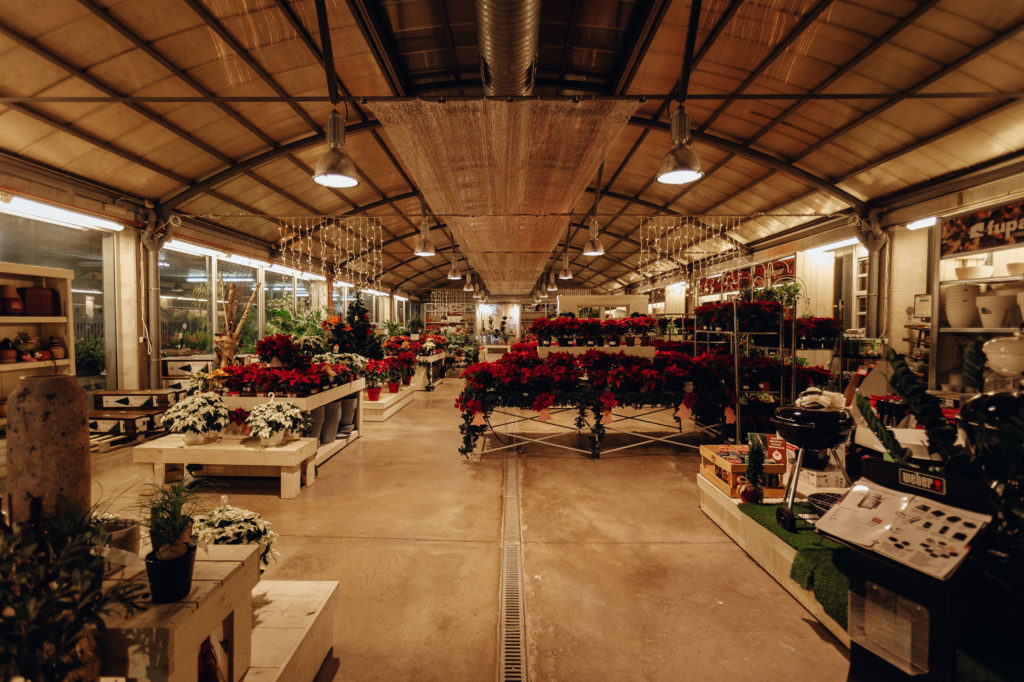Who knew lighting up any new space is a such challenging task! After all we can’t apply the same type of lighting solutions to both homes and commercial spaces, right?
One has to consider many different criteria while selecting lighting solutions. The size of the place, the height of the ceilings, the required characteristics of the light, and the type of lamp are just some of the factors to consider. Every kind of space has its own requirements.
One of the most important considerations is the overall dimensions of the space to be illuminated. Here, there are significant differences between conventional spaces and massive spaces with high ceilings. These larger structures, with ceiling heights ranging from 20 to 45 feet, are typically seen in industrial settings such as factories, shop floors and warehouses, or in other high capacity spaces such as gymnasiums or large commercial establishments. Conventional lighting solutions, including ordinary bulbs, recessed lights and lamps are simply not up to the task of adequately lighting these spaces.
Apart from the intensity of light, some of the other critical requirements of large-scale lighting solutions are uniformity of illumination and color correctness. Workers in industrial buildings are often engaged in high risk activities involving powerful machinery, making consistent and powerful illumination a critical need to ensure safety and productivity.
High Bay lights are the most common and practical solution to these kinds of lighting needs. High Bay lights are extremely powerful and are specifically designed to meet the requirements unique to large areas. Metal Halide (MH) lamps and High-Pressure Sodium (HPS) lamps have been the preferred choices for many years. These lamps use a very different technology compared to conventional incandescent or fluorescent lamps. A side effect of this technology is that the most efficient shape for MH and HPS lamps is round or circular. This shape optimizes the lamp’s lifespan and maximizes the amount of light cast in a particular direction.
Advances in lighting technology have resulted in more modern types of lamps suitable for High Bay applications. In particular, Industrial LED lights now typically outperform MH and HPS lamps on most counts, including maintenance cost, energy efficiency, and lighting quality. They come with the added advantage of being suitable for a variety of shapes, not just the round shape that MH and HPS lamps are constrained to use. The most common additional shape that Industrial LED lights are used with is rectangular or strip, wherein the lights are arranged in a linear shape that increases coverage and uniformity.
Modern LED lighting technology allows us to manufacture and install High Bay lights in non-round shapes. Two of the more popular new shapes and layouts are linear and grid mounted. However, the conventional round shape continues to be the preferred option in areas where High Bay lights are required. The main reason for this is consistency and continuity.
Vast numbers of existing structures are fitted with the standard round lights, and very often there is little to no incentive to invest in redesigning the lighting layout. It makes the most financial sense to simply continue with the conventional round shape because the time and money required to change the shape of the lights could be better invested elsewhere.
Additionally, round High Bay lights benefit from a strong supporting ecosystem already in place in the form of spare parts, standardized fittings, and predictable labor costs. Many firms also have long term maintenance contracts that are specifically targeted at the lighting setup they already use. Moving to a new shape of lamp would require massive changes at multiple levels, and there is usually not enough upside to making a shift of this nature.
High Bay lights are an integral part of the modern landscape, and have a long history behind them. Technology continues to advance and bring in new innovations, but the classic familiar round shape is here to stay in factories and industrial settings around the world.







